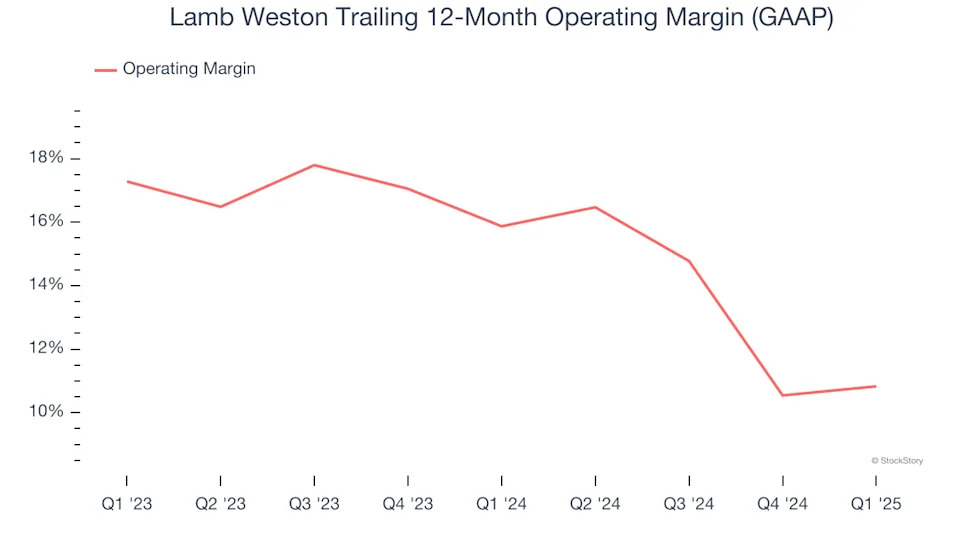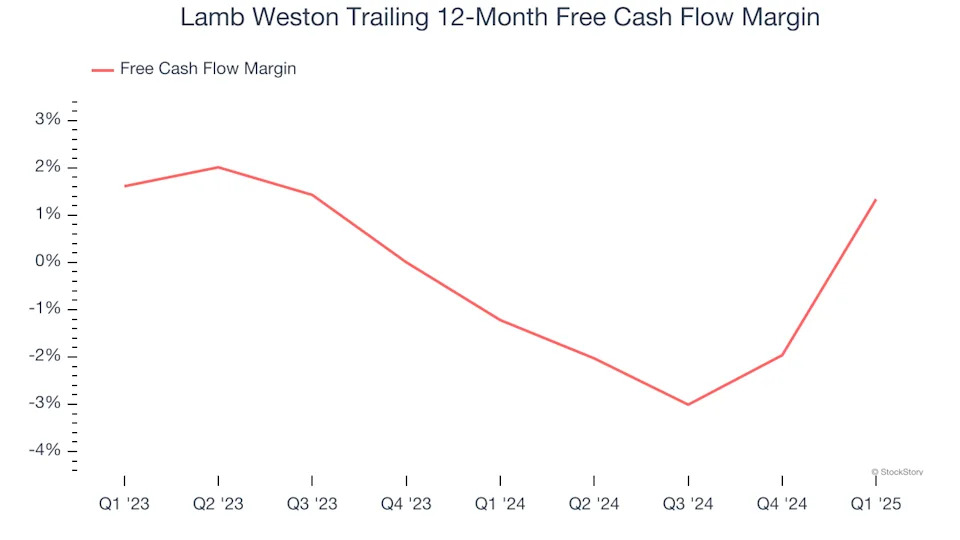
3 Reasons LW is Risky and 1 Stock to Buy Instead
Lamb Weston’s stock price has taken a beating over the past six months, shedding 33.1% of its value and falling to $51.75 per share. This may have investors wondering how to approach the situation.
Is now the time to buy Lamb Weston, or should you be careful about including it in your portfolio? Check out our in-depth research report to see what our analysts have to say, it’s free .
Why Is Lamb Weston Not Exciting?
Even though the stock has become cheaper, we don't have much confidence in Lamb Weston. Here are three reasons why there are better opportunities than LW and a stock we'd rather own.
1. Projected Revenue Growth Shows Limited Upside
Forecasted revenues by Wall Street analysts signal a company’s potential. Predictions may not always be accurate, but accelerating growth typically boosts valuation multiples and stock prices while slowing growth does the opposite.
Over the next 12 months, sell-side analysts expect Lamb Weston’s revenue to stall, a deceleration versus its 17.3% annualized growth for the past three years. This projection doesn't excite us and implies its products will see some demand headwinds.
2. Shrinking Operating Margin
Operating margin is an important measure of profitability accounting for key expenses such as marketing and advertising, IT systems, wages, and other administrative costs.
Looking at the trend in its profitability, Lamb Weston’s operating margin decreased by 5 percentage points over the last year. This raises questions about the company’s expense base because its revenue growth should have given it leverage on its fixed costs, resulting in better economies of scale and profitability. Its operating margin for the trailing 12 months was 10.8%.

3. Breakeven Free Cash Flow Limits Reinvestment Potential
Free cash flow isn't a prominently featured metric in company financials and earnings releases, but we think it's telling because it accounts for all operating and capital expenses, making it tough to manipulate. Cash is king.
Lamb Weston broke even from a free cash flow perspective over the last two years, giving the company limited opportunities to return capital to shareholders. The divergence from its good operating margin stems from its capital-intensive business model, which requires Lamb Weston to make large cash investments in working capital and capital expenditures.

Final Judgment
Lamb Weston’s business quality ultimately falls short of our standards. Following the recent decline, the stock trades at 15.1× forward price-to-earnings (or $51.75 per share). Investors with a higher risk tolerance might like the company, but we don’t really see a big opportunity at the moment. We're fairly confident there are better investments elsewhere. We’d recommend looking at one of our top digital advertising picks .